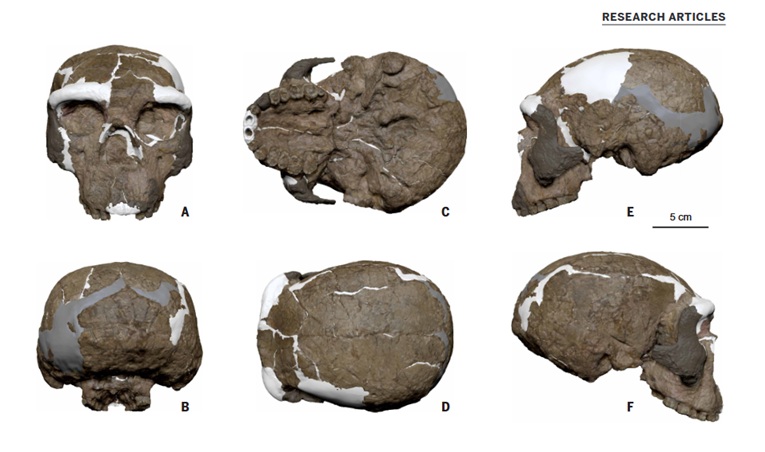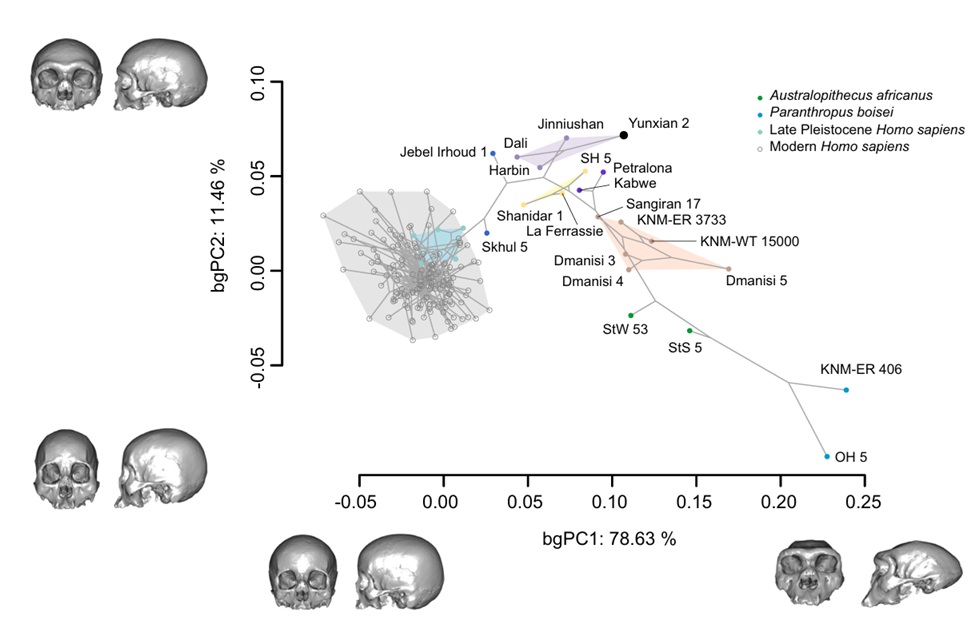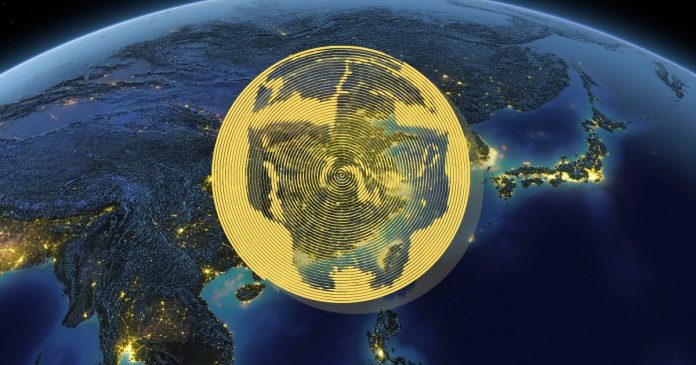In a groundbreaking study published in Science, researchers have reconstructed a One-million-year-old hominin skull from Yunxian, China, revealing a mosaic of traits that challenge long, held assumptions about human evolution. The fossil, known as Yunxian 2, may belong to the Homo longi clade, a lineage that includes the enigmatic Denisovans and now appears to be a sister group to Homo sapiens.
The Skull: Yunxian 2

Discovered in Hubei Province and dated to 0.94–1.10 million years ago, Yunxian 2 was previously dismissed as a variant of Homo erectus. But using advanced CT segmentation and digital reconstruction, Feng et al. corrected distortions and revealed a cranium with both primitive and derived features:
- Endocranial volume: ~1143 cm³—larger than H. erectus, smaller than H. sapiens.
- Facial morphology: Projecting face like H. erectus, but with flat zygomaxillary region resembling H. sapiens and H. antecessor.
- Cranial vault: Long and low, lacking Neanderthal traits like the occipital bun.
Skull Phylogenetic Placement

Using 533 morphometric landmarks and Bayesian tip-dating, the team placed Yunxian 2 within the monophyletic longi clade, alongside fossils from Harbin, Dali, Jinniushan, and Xiahe. This clade is:
- Sister to the sapiens clade, which includes Homo sapiens and H. heidelbergensis.
- Likely includes the Denisovans, based on shared dental and cranial traits.
- Diverged from the sapiens lineage ~1.32 million years ago, far earlier than the conventional 300,000-year emergence of Homo sapiens.
Skull Implications for Human Origins
This find suggests that the evolutionary split between Homo sapiens and its sister lineages occurred at least 500,000 years earlier than previously thought. Yunxian 2 may preserve transitional features near the root of both clades, implying rapid diversification in the Middle Pleistocene.
Importantly, this does not mean Homo sapiens existed a million years ago. Rather, it indicates that the genetic and morphological groundwork for our species may have begun much earlier; and possibly outside Africa.
Editorial Perspective
The study is meticulous in its reconstruction and modeling, but it also invites caution. Morphological similarity does not equal direct ancestry, and genomic data still supports an African origin for Homo sapiens. Yet the Yunxian skull forces a reevaluation of how, and where, our lineage began.
Forensic analysts and educators must now reconcile this fossil with genomic, archaeological, and paleoenvironmental data. The Yunxian 2 cranium is not just a skull—it’s a signal from deep time, urging us to redraw the map of human evolution.

